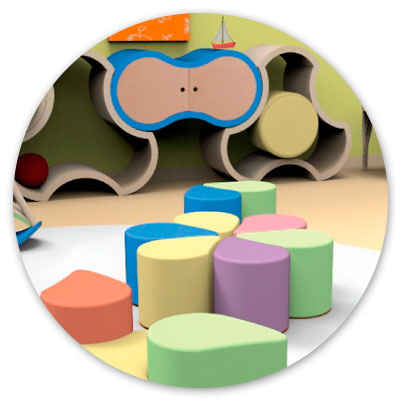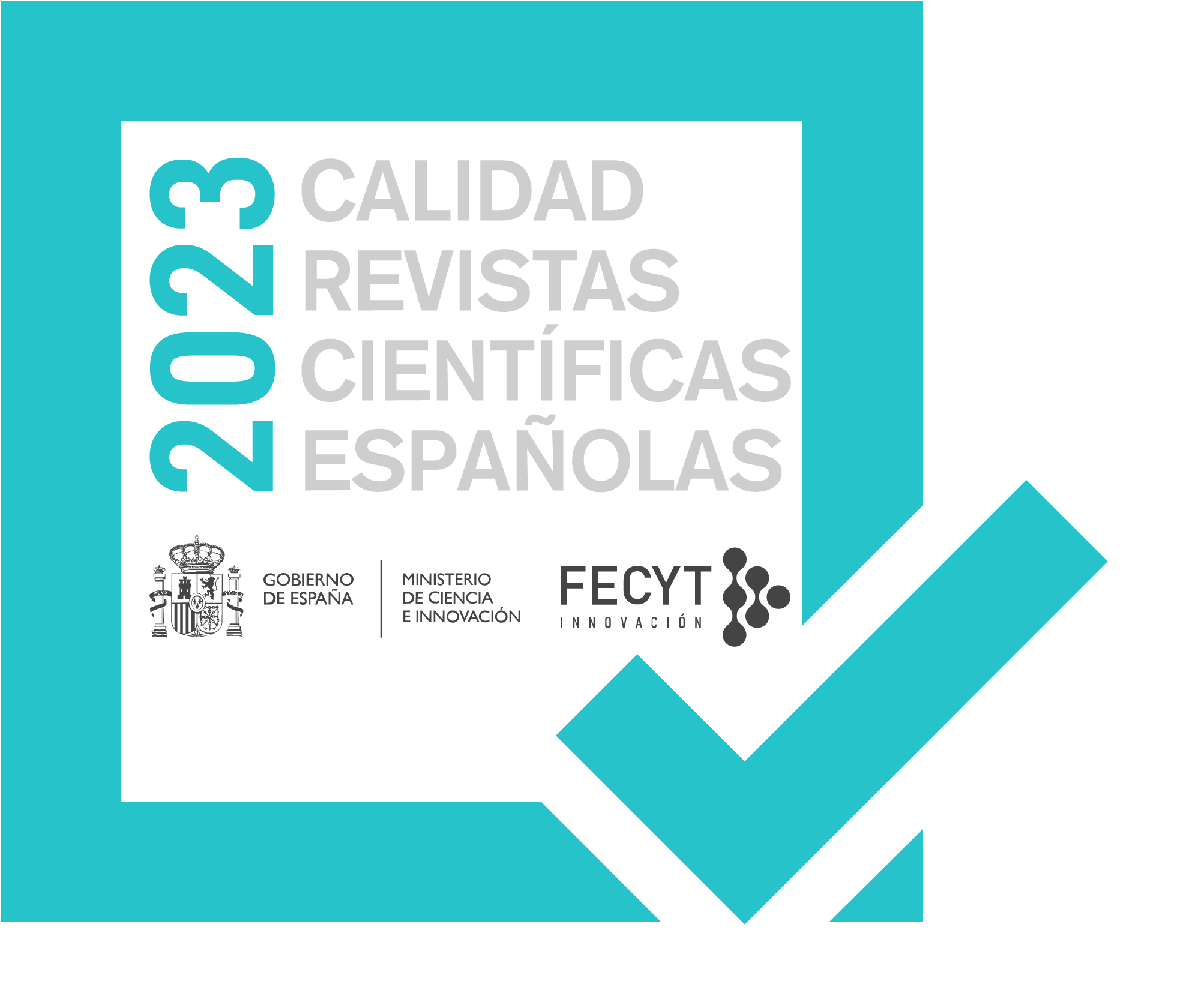Design to configure new places and adaptative learning spaces
DOI:
https://doi.org/10.24310/Idiseno.2021.v16i.12804Keywords:
innovation, modularity, flexibility, adaptability, inclusionAbstract
Designing forms and spaces of learning is a process that requires pedagogical, architectural, social, cultural and political creativity.
The national and international scientific literature (OECD, 2017) on educational innovation highlights the close relationship between didactics and the learning environment. For this reason, the processes of educational renewal cannot disregard a new vision of school spaces and educational settings.
New guidelines for school planning are emerging, emphasizing learning as an active and constructive process in which each child has a "leading" role.
Indeed, in the contemporary scenario, students become active participants in the creation of information and new ideas in the educational environment. Consequently, 21st-century education is based on three pedagogical principles (McLoughlin & Lee, 2008): personalization, participation and productivity (Luna Scott, 2015).
The study of these aspects, accompanied by the evaluative and comparative analysis of design experiences in the school field, has made it possible to configure the new SINAPSI 0-14 concept, a furnishing system that adapts and adopts advanced technologies to meet the needs of children and teachers, both current and future, from a holistic perspective.
The aim was to design a system of modular, flexible and adaptable "organic" cells that can be used across the board by users of different ages, from kindergartens to primary and secondary schools. SINAPSI 0-14 is configured in forms belonging to a universe of geometries that can be traced back to a single matrix of organic elements. The set of symbols that can be aggregated define different forms of the furnishing system, making the educational space "chronotopic" and capable of changing according to the time and place it is created and according to its use and needs.
These in-depth studies have made it possible to reconstruct a critical analytical repertoire on the theme of educational spaces and school architecture, interweaving its changes in line with pedagogical models and regulatory instruments to define the school of the future.
Downloads
Metrics
Publication Facts
Reviewer profiles N/A
Author statements
Indexed in
-
—
- Academic society
- N/A
- Publisher
- Universidad de Málaga
References
- Hertzberger, H. (2008). “Space and learning: Lessons in architecture 3” (Vol. 3). 010 Publishers
- INDIRE. “Le idee del Movimento Avanguardie educative”. Available on: http://innovazione.indire.it/avanguardieeducative/le-idee
- INDIRE. “Manifesto delle avanguardie educative”. Available on: https://www.indire.it/wp-content/uploads/2015/08/Manifesto-AE-definitivo.pdf
- Julia D. (1996). “Riflessioni sulla recente storiografia dell’educazione in Europa: per una storia comparata delle culture scolastiche”. In Annali di storia dell’educazione e delle istituzioni scolastiche, 3, pp. 119-147
- Knight, G. & Noyes, J. A. N. (1999). “Children's behaviour and the design of school furniture”. Ergonomics, 42(5), 747-760.
- Lucente R. (2012) “Asili”. Grandi Tascabili di Architettura, Architectural Book and Review S.r.l..
- Luna Scott C. (2015). “THE FUTURES of LEARNING 3: What kind of pedagogies for the 21st century?”. UNESCO Education Research and Foresight, Paris. ERF Working Papers Series, No. 15.
- Lupi, A. (February 2018). “Ambiente e apprendimento, educazione indiretta ed esercizio”. Momo 13, Mondo Montessori. Available on: https://www.fondazionemontessori.it/wp-content/uploads/2018/08/momo13def-ok.pdf
- McLoughlin, C., & Lee, M. (2007). “Social software and participatory learning: Pedagogical choices with technology affordances in the Web 2.0 era”. In ICT: Providing choices for learners and learning. Proceedings ascilite Singapore 2007, [pp. 664-675]. Available on: https://acuresearchbank.acu.edu.au/download/58d33e2eda9f20d9d89087835a2f4ccb3a39970568240035692ba1c5bb672b13/233495/mcloughlin.pdf
- Milanese, S. & Grimmer, K. (2004). “School furniture and the user population: an anthropometric perspective”. Ergonomics, 47(4), 416-426.
- Mosa, E. (15 January 2013). “Quest2Learn: in viaggio alla ricerca dell’apprendimento”. Available on: https://www.indire.it/2013/01/15/quest2learn-in-viaggio-alla-ricerca-dellapprendimento/
- Mosa, E. (9 June 2015). “Avanguardie educative: proposte di innovazione sostenibile”. Available on: https://www.agendadigitale.eu/smart-city/avanguardie-educative-proposte-di-innovazione-sostenibile/
- Munari B. (1974). “Proposta per una scuola di design che comincia dall’asilo”, in Domus ARCHITETTURA ARREDAMENTO ARTE, Milano, Editoriale Domus, vol. 538, [pp. 1-9].
- Norme tecniche delle linee guida del Ministero dell’Istruzione, dell’Universita? e della Ricerca, (2013), disponibile in https://www.istruzione.it/avviso_agli_utenti/non_valido.html
- OECD (2017). “Learning Environments Evaluation Programme (LEEP)”. Available on: https://www.oecd.org/education/LEEP-Brochure-OECD.pdf.
- Panagiotopoulou, G., Christoulas, K., Papanckolaou, A. & Mandroukas, K. (2004). “Classroom furniture dimensions and anthropometric measures in primary school”. Applied ergonomics, 35(2), 121-128.
- Quaderni Danese. Giochi Didattici 1, (1978). Ini Atti del Convegno Progetto Scuola, promosso dalla Danese Giochi Didattici, Milano, Danese Edizioni, 15 aprile-14 maggio 1977.
- Striano (2020). “Progettare gli spazi educativi. Coordinate pedagogiche e didattiche”. In Roberto, V. Gli spazi educativi. Psicologia, 110, 110. pp.11-24
- Tolve A. (24 aprile 2017). “Fantasia al potere. Tra Munari e Rodari”. Available on: https://www.artribune.com/professioni-e-professionisti/didattica/2017/04/bruno-munari-gianni-rodari-fantasia/
- Tosi L. & Moscato G. (12 March 2013). “Ørestad Gymnasium: una scuola senza carta. Un luogo abitabile nella sua totalità, che crea occasioni di apprendimento”. Available on: https://www.indire.it/2013/03/12/orestad-gymnasium-una-scuola-senza-carta/
- Tosi, L. (2016). “Spazi educativi flessibili e ambienti differenziati”. In Biondi, G., Borri, S., & Tosi, L. (Eds.), Dall'aula all'ambiente di apprendimento (Vol. 4). Florence: Altralinea Edizioni. (pp.51-74)
- Vanacore R. & Gomez Paloma F. (2020). Progettare gli spazi educativi. Un approccio interdisciplinare tra architettura e pedagogia. Roma: Editoriale Anicia.
- Vanni, L. (2015). “Tra banchi, quaderni e calamai: la storia materiale della scuola nelle immagini della Fototeca storica INDIRE”. Studi sulla Formazione/Open Journal of Education, 18(2), 207-222
- Yeats, B. (1997). “Factors that may influence the postural health of schoolchildren” (K-12). Work, 9(1), 45-55.

Downloads
Published
How to Cite
Issue
Section
License
Aquellos autores/as que tengan publicaciones con esta revista, aceptan los términos siguientes:- Los autores/as conservarán sus derechos de autor y garantizarán a la revista el derecho de primera publicación de su obra, el cuál estará simultáneamente sujeto a la Licencia de reconocimiento de Creative Commons que permite a terceros compartir la obra siempre que se indique su autor y su primera publicación esta revista.
- Los autores/as podrán adoptar otros acuerdos de licencia no exclusiva de distribución de la versión de la obra publicada (p. ej.: depositarla en un archivo telemático institucional o publicarla en un volumen monográfico) siempre que se indique la publicación inicial en esta revista.
- Se permite y recomienda a los autores/as difundir su obra a través de Internet (p. ej.: en archivos telemáticos institucionales o en su página web) antes y durante el proceso de envío, lo cual puede producir intercambios interesantes y aumentar las citas de la obra publicada. (Véase El efecto del acceso abierto).







14.png)



